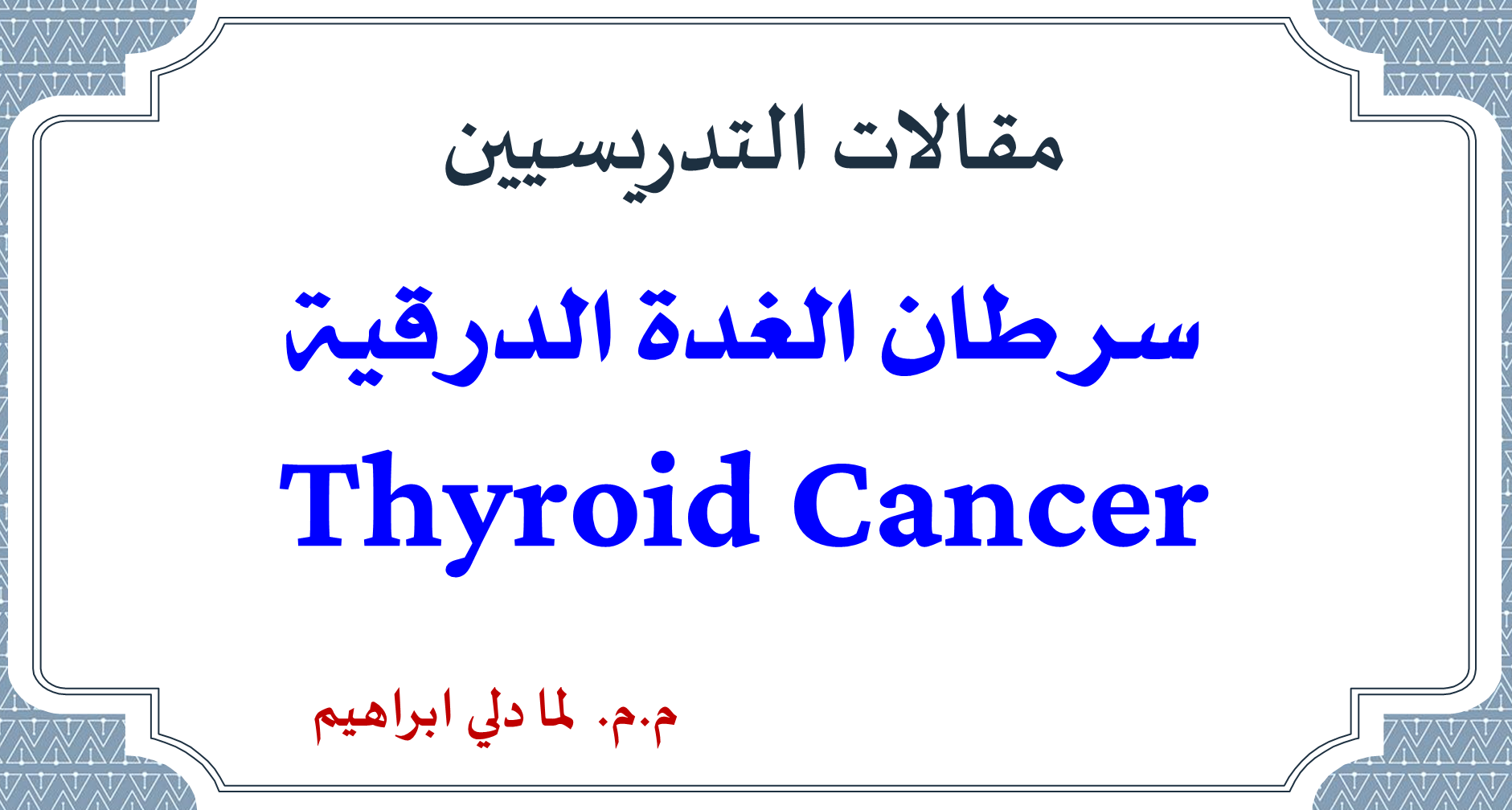
Thyroid Cancer
Assistant Lecturer: Lama Dali Ibrahim
University of Anbar -College of basic education/Haditha.
Scientific specialization: Biology

One type of cancer that begins in the thyroid gland is thyroid cancer. When cells start to divide uncontrollably, cancer develops.
The thyroid gland produces hormones that work to control your body temperature, heart rate, blood pressure, and metabolism.
Under the thyroid cartilage (Adam's apple), near the front of the neck, is where the thyroid gland is located. The thyroid cannot typically be felt or seen. Its two lobes, the right lobe and the left lobe, are connected by a short segment of gland known as the isthmus, giving it the appearance of a butterfly.
There are two primary cell types in the thyroid gland:
· Follicular cells utilize iodine from the blood to generate thyroid hormones, which help regulate a person’s metabolism. Producing too much thyroid hormone
· C cells, also known as Para follicular cells, produce the hormone calcitonin, which aids in regulating how the body utilizes calcium.
Each type of cell gives rise to a different type of cancer. The variations are significant because they have an impact on the severity of the malignancy and the sort of care required.
The thyroid gland is susceptible to developing a variety of growths and malignancies. Although the majority of them are benign (non-cancerous), some of them are malignant (cancerous), which means they have the potential to spread to neighboring tissues and other regions of the body.
benign thyroid disorders include thyroid enlargement: Patients and their doctors can frequently feel or even see changes in the size and form of the thyroid gland. Goiter is another term for a thyroid gland that is unusually large. Some goiters are diffuse, which means the gland is huge everywhere. Usually, it is not malignancy if the thyroid gland is larger than usual. A hormonal imbalance frequently leads to both diffuse and nodular goiters.
· Thyroid nodules: Thyroid nodules are lumps or bumps in the thyroid gland. About 2 or 3 out of every 20 thyroid nodules are malignant, but the majority are benign. These nodules can occasionally produce excessive thyroid hormone, which can lead to hyperthyroidism. Almost typically, nodules that overproduce thyroid hormone are benign.
Types of thyroid cancers include1-Papillary cancer: About 8 out of 10 cases of thyroid cancer are papillary malignancies, also known as papillary carcinomas or papillary adenocarcinomas. These tumors often only affect one lobe of the thyroid gland and progress very slowly. Papillary malignancies frequently spread to the neck lymph nodes despite their slow growth. These tumors are rarely lethal, even when they have progressed to the lymph nodes, and are frequently effectively treated.
2- medullary thyroid malignancies :About 4% of thyroid tumors are medullary thyroid malignancies (MTC). It originates from the thyroid gland's C cells, which normally produce the hormone calcitonin, that helps in regulating the level of calcium in the blood. Before a thyroid nodule is found, this cancer can occasionally spread to the lymph nodes, the lungs, or the liver. Identifying and treating this form of thyroid cancer is more difficult.
3- anaplastic carcinoma : About 2% of thyroid malignancies are anaplastic carcinoma, also known as undifferentiated carcinoma, a rare form of thyroid cancer. It is thought to occasionally progress from a papillary or follicular carcinoma that is already present. The reason this cancer is referred to as undifferentiated is because the cancer cells differ from normal thyroid cells very much. This malignancy is particularly difficult to treat and frequently spreads quickly into the neck and other body areas.
Key word : Thyroid gland , Thyroid nodules, Thyroid cancer , Goiter




